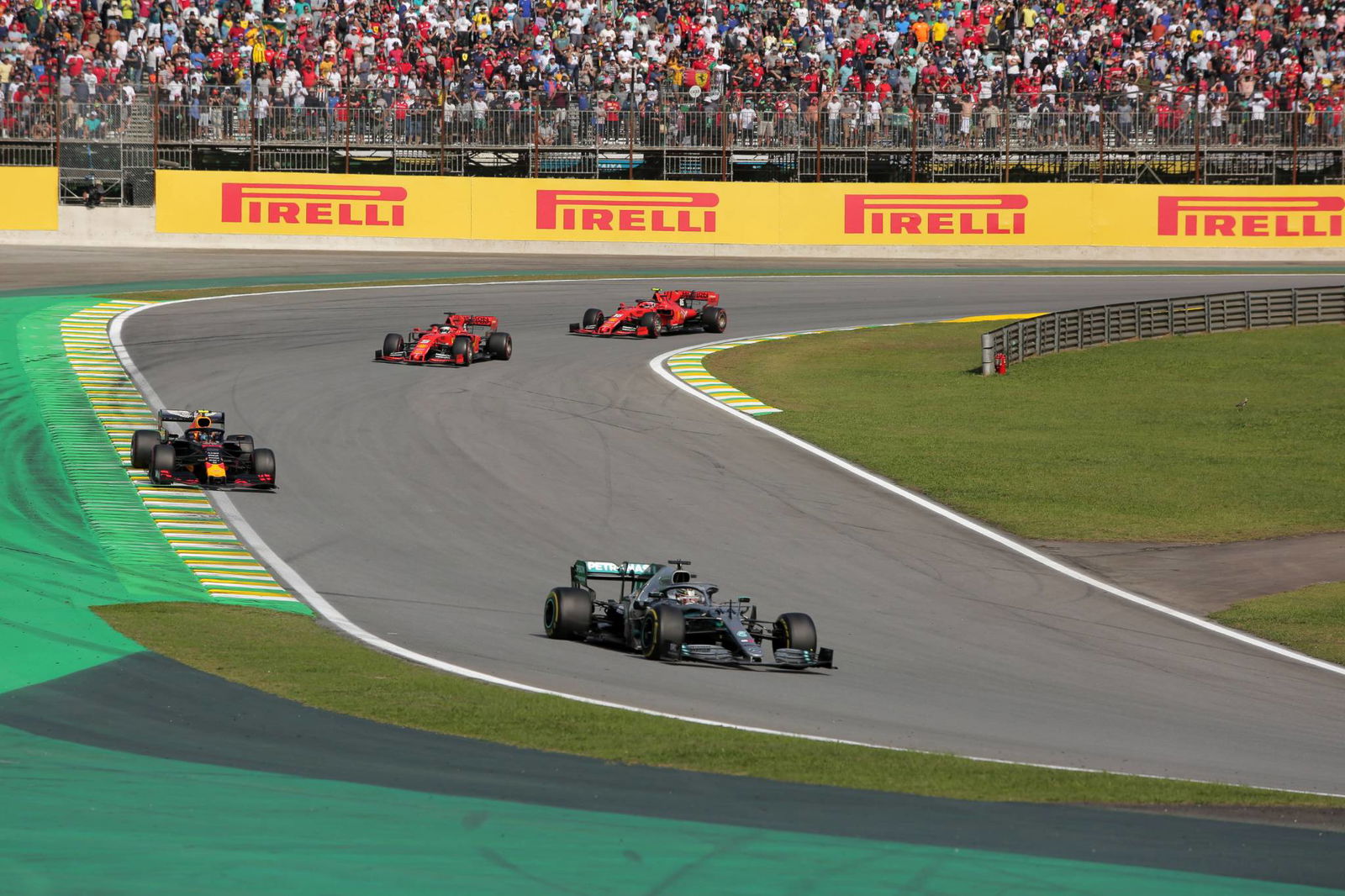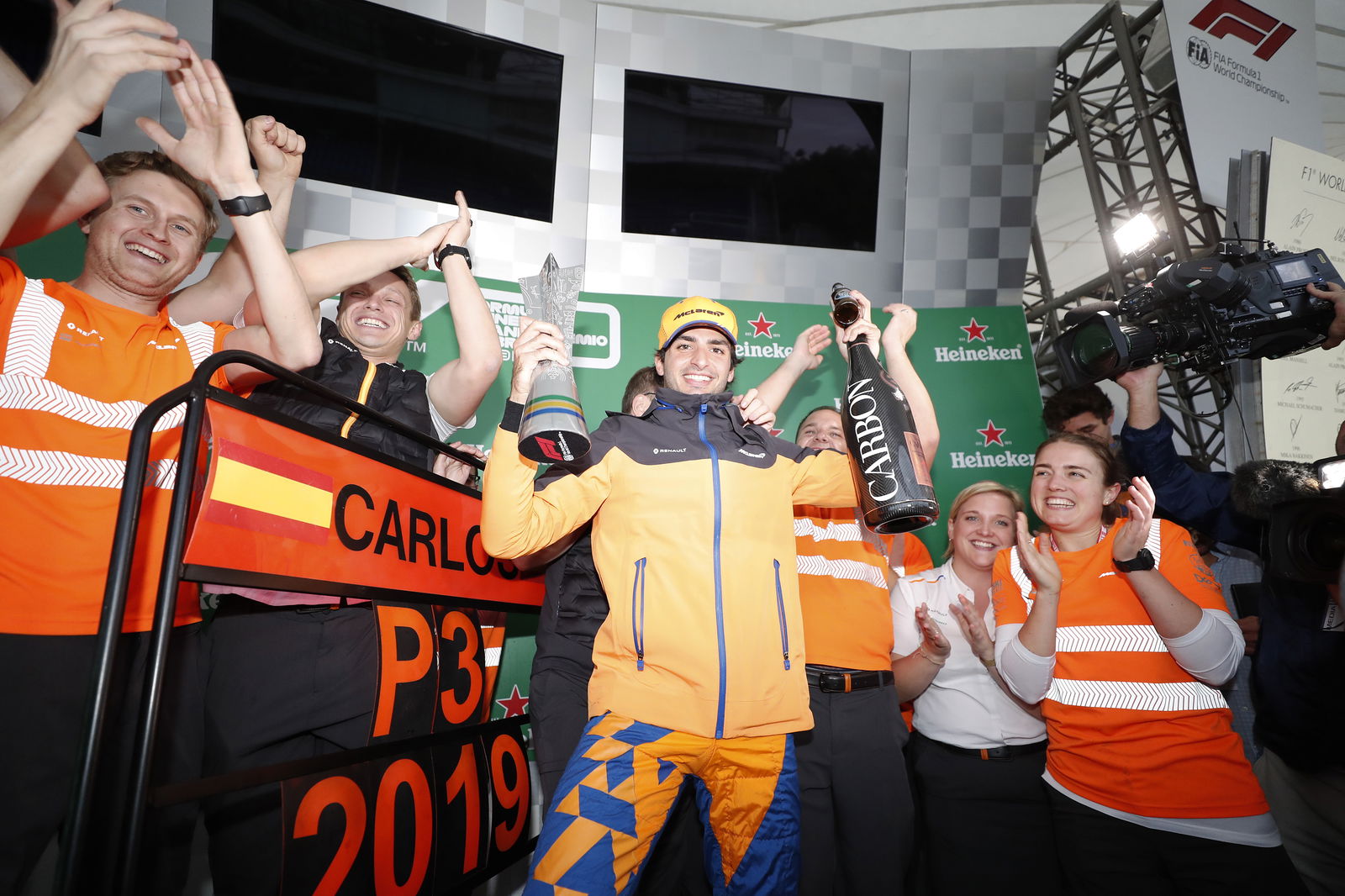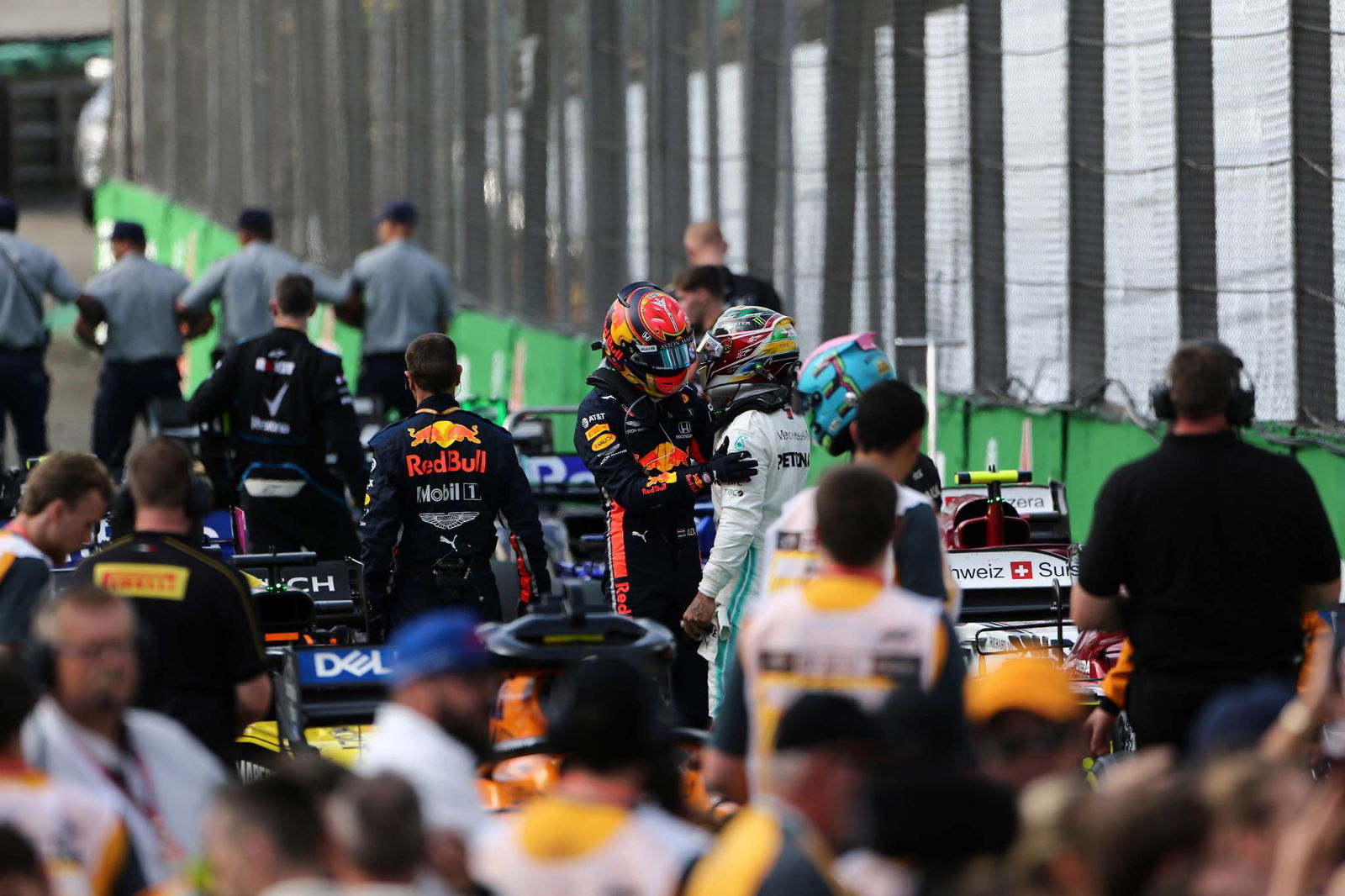F1 Race Analysis: How the late drama unfolded at Interlagos
With 20 laps to go at Interlagos, the Brazilian Grand Prix appeared to be nearing an underwhelming conclusion.
Lewis Hamilton was putting pressure on Max Verstappen for the race lead, albeit struggling to draw within the one-second window to get DRS. Sebastian Vettel was marooned in P3. The best of the action would have come courtesy of Charles Leclerc and Valtteri Bottas, who were enjoying a great scrap for fourth, and may have been joined by Alexander Albon following his stop for a set of Softs.

With 20 laps to go at Interlagos, the Brazilian Grand Prix appeared to be nearing an underwhelming conclusion.
Lewis Hamilton was putting pressure on Max Verstappen for the race lead, albeit struggling to draw within the one-second window to get DRS. Sebastian Vettel was marooned in P3. The best of the action would have come courtesy of Charles Leclerc and Valtteri Bottas, who were enjoying a great scrap for fourth, and may have been joined by Alexander Albon following his stop for a set of Softs.
And then all hell broke loose, turning a fairly standard race into the most shocking finish to a race this season, even trumping the crazy finish of the German Grand Prix in July.
But how did we end up with a top three of Max Verstappen, Pierre Gasly and Carlos Sainz?
The man who triggered it all was Valtteri Bottas. As the Finn toiled behind Leclerc, struggling to find a way through despite his fresher tyres, wisps of white smoke began to escape from the rear of his Mercedes. Bottas kept going for a lap before the loss of power could be felt, forcing him to slow on the run to Turn 4. He did well to keep going to find a gap in the fence to try and avoid impacting the race, but the Safety Car was deployed nevertheless, shaking things up at the front.
The dilemma facing the leaders was whether they prioritised track position or having fresh tyres for the restart. Knowing Hamilton would struggle to beat Verstappen head-to-head, Mercedes looked to gain an advantage by telling the Briton to do the opposite of the leader. When Verstappen dived in for Softs – a decision he said “saved” his race – Hamilton stayed out on Mediums to move into the lead.

Hamilton’s lead was followed by Sebastian Vettel, who had come in only a few laps earlier for Softs and had no remaining fresh sets to switch to anyhow. Charles Leclerc was able to make the switch, having planned a one-stop initially, causing him to drop behind Albon for the restart.
The field was bunched up for the restart. Pierre Gasly had spent the entire race leading the midfield, but now had fresh pressure from Romain Grosjean, Carlos Sainz and, perhaps most dangerously, a fresh Soft-shod Kimi Raikkonen, behind. All they thought they would be fighting for at this point was P6 at best…
The benefit of the fresh Softs quickly showed as Verstappen swooped around the outside of Hamilton to take the lead at Turn 1. Red Bull teammate Albon was also on the move, barging ahead of Vettel, while Leclerc did not initially get his tyres working so well to remain fourth.
Gasly, meanwhile, was given plenty of breathing room in sixth as Grosjean fell backwards and Sainz, who remained committed to a one-stop, kept Raikkonen back, opening up a five-second gap to the Toro Rosso driver ahead.
And then came the Ferrari clash. Leclerc clearly had more pace at this point, his Soft tyres some five laps fresher than Vettel’s, allowing him to try a dive at Turn 1. Vettel fought back through the Senna S before the pair went side-by-side on the run to Turn 4, leading to contact for which Ferrari remains uneasy to apportion blame at this point.
It was another twist at the front – and one that Mercedes again tried to take advantage of. The team gave Hamilton the choice to pit or not, something he gladly decided on. “I either stayed out, my fronts cooled again because I was on the harder tyre, and struggled with the heating and lost position, or I would have ended up probably in the same position at least,” he said. “I pitted, but it didn’t work out.”
The decision to pit dropped Hamilton to fourth on-track, trailing Verstappen, Albon and Gasly, whose steady rise up the field now put him on the cusp of a podium. The debris strewn across the track after the Ferraris’ clash put the race at risk of ending under the Safety Car, meaning Hamilton had risked frittering away a podium.
Alas, the track was cleared in time to allow for two final laps under green to the finish. Hamilton’s decision to switch to Softs was justified as he easily passed Gasly before putting pressure on Albon through the middle sector. Albon was expecting to be picked off by Hamilton, but did not see a move into Turn 10 coming – until it did, resulting in contact.
“Of course you see it, but once you dive, there’s a blindspot, and you don’t know how far alongside you he is,” Albon said. “I thought ‘OK he’s far enough back that I’ll give him some space’, but I didn’t expect it really. I thought OK, I had the contact, it’s kind of that thing where you’re just waiting for it, it’s like ‘ah’ and then it goes - slow motion.
“It was a shame because I think he would have overtaken me anyway, into Turn 1, obviously he had the fresh tyres and he was looking racey.”
And so the door was opened for Gasly. “When I saw we could go through this and we were second, I was like ‘OK this is looking really good’,” he said. “I still had Lewis behind me until the last centimetre before the line. He was really trying and I could see his front wing. I really didn’t want to let him past, because I wanted to hold onto that second position.”
The drag race between the Mercedes and the Toro Rosso proved what had been deduced throughout the Interlagos weekend: that the Honda power unit is now on a par with the front-runners. Gasly managed to keep his nose ahead, crossing the line 0.062 seconds clear to record his first F1 podium, and Toro Rosso’s best result since Vettel’s Monza win in 2008.
Hamilton was quick to hold his hands up for the Albon incident, even going as far to skip the stewards’ briefing and send Mercedes’ team manager with the message that he took full responsibility. It put Sainz – barring a scare over a possible DRS infringement – in line for his first podium, and McLaren’s first since Australia 2014.

The one-stop strategy was a big roll of the dice from McLaren, particularly when so many drivers came in late on to take on Softs. Sainz picked off Grosjean on the first restart, and while he was powerless to get close to the cars ahead on his worn tyres, he kept the Alfa Romeo pair of Kimi Raikkonen and Antonio Giovinazzi at bay in another drag race to the line. This time, the Renault power unit delivered the goods.
“We were the only car on a one-stop,” Sainz said. “That made me very vulnerable on the last two Safety Car restarts. I had no temperatures, I had the Medium that doesn’t warm up very well, and Kimi and Gasly on the Soft tyre, very fresh Softs. I knew on the Safety Cars it was all or nothing.
“In the first Safety Car, I managed to pass Grosjean who was in a vulnerable position like me, and apart from that, I managed to pass it was Grosjean and then defend the whole stint from Kimi, and then defend from Kimi on the second restart, I thought they were not going to make it.”
The midfielders may have been overlooked by most, but at Interlagos on Sunday, they finally got their time in the sun.
It’s a race we won’t be forgetting in a hurry.

